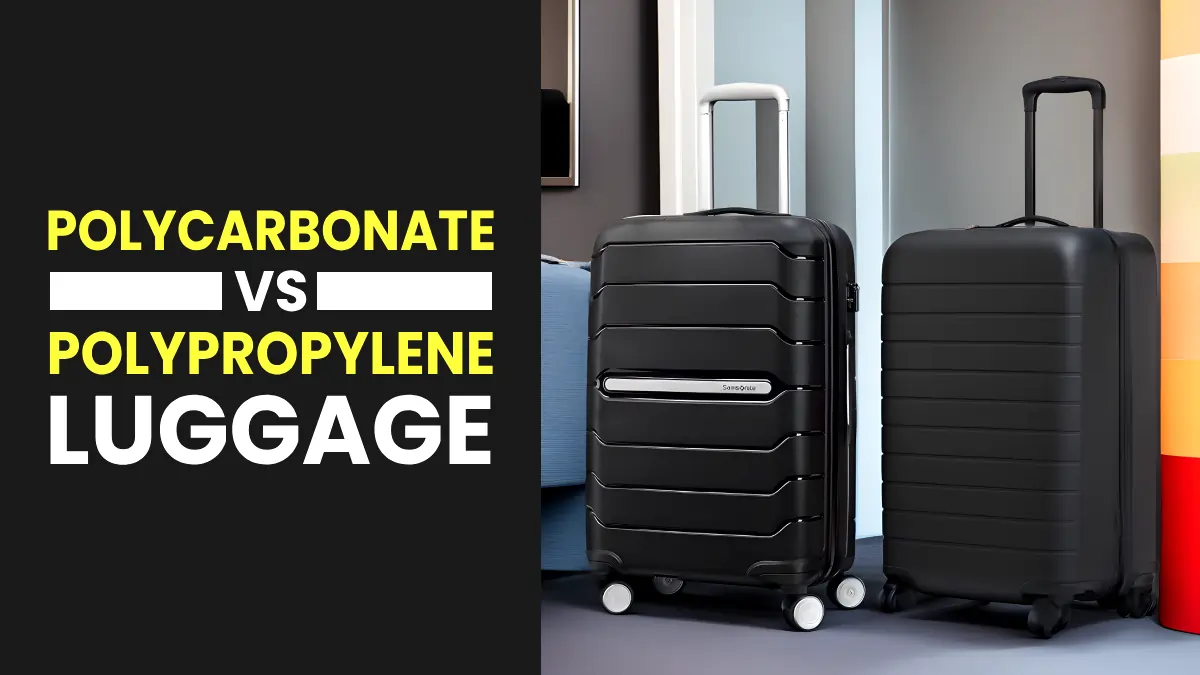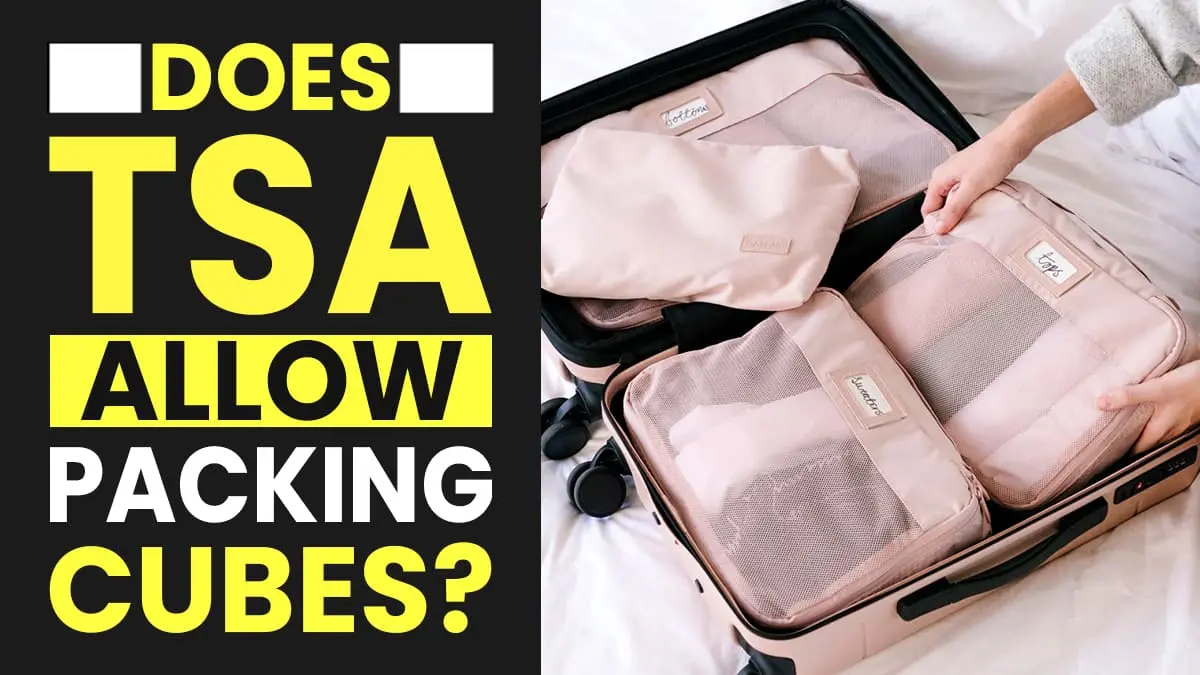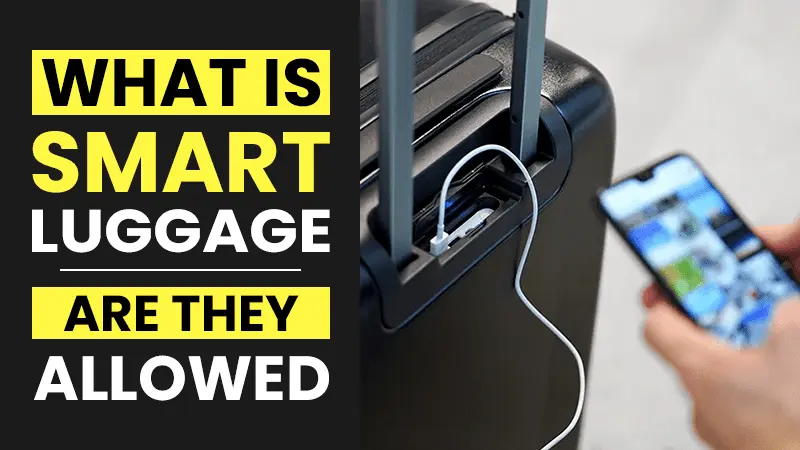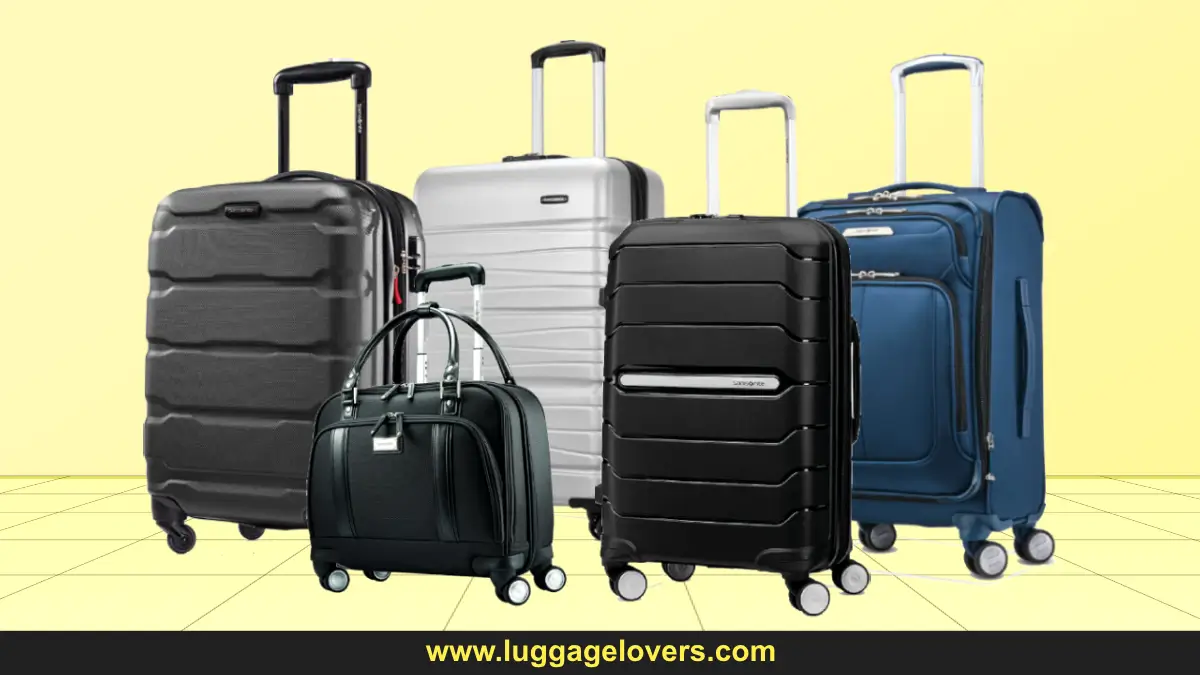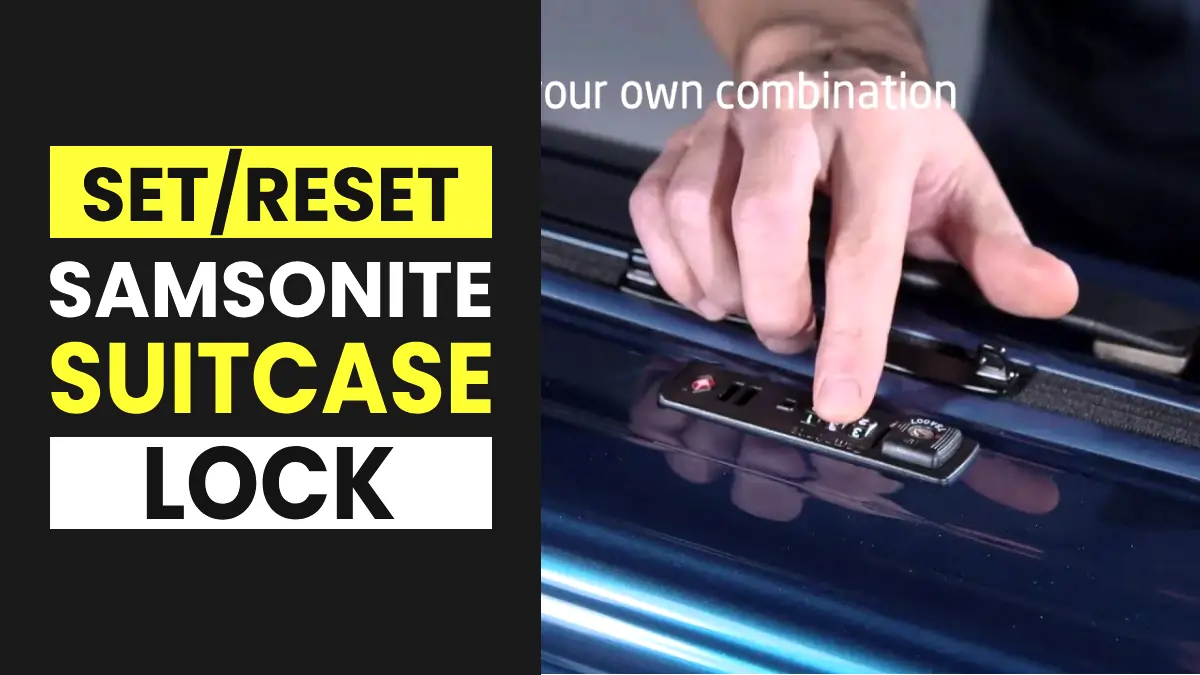Polycarbonate vs Polypropylene Luggage: Which Material Is Better for You?
Do you want to get a piece of luggage but are stuck on the debate of polycarbonate vs polypropylene luggage because both of them are excellent materials for hardside luggage? Both of them share some properties, but there are some major differences too that become really important for you to be aware of so that you can decide which one you should go with.
In this guide to polycarboante vs polypropylene luggage, we’ll cover everything about materials, including their benefits and drawbacks, and then we’ll also share our point of view on both materials, which will ultimately help you make the right decision.
So stay with us to explore the journey of both the luggage materials.
Summarizing the Main Differences
- Polycarbonate suitcases are more durable and long-lasting than those made of polypropylene.
- Polycarboante luggage captures more than 50% of the market share of hardside luggage, while that of polypropylene only accounts for 8%.
- Polypropylene is the lightest material, followed by ABS and polycarbonate.
- Polycarbonate luggage is more flexible than that of polypropylene.
- Polycarbonate luggage is more expensive than polypropylene.
- Polycarboante is affordable, but polypropylene is even more affordable.
Our Favorite Polycarboante Luggage
| Best Overall Luggage | Samsonite Omni PC |
| Best Hardside Luggage | Delsey Paris Helium Aero |
| Most Premium Luggage | Away the Carry-On |
Our Favorite Polypropylene Luggage
| Best Overall | Samsonite Freeform |
| Most Affordable | Traveler’s Choice Pagosa |
What Is Polycarbonate Material?
Without getting much into technical details, let me tell you that polycarbonate is a thermoplastic material that is known for its ultimate durability. It’s the most durable when it comes to plastic material.
Not only is it being used in luggage but also in thousands of other products from different industries. This is because it easily resists and withstands any impact. When we talk about luggage, this material proves to be a boon because it protects your belongings in the best way.
Not only is it durable, but it is also lightweight. That’s why more than 50% of hardside suitcases are made of polycarbonate. That proves its durability and longevity.
Benefits and Drawbacks of Polycarbonate Suitcases
The Good
- Polycarbonate suitcases are extremely durable; in fact, it is the most durable plastic material for luggage.
- They’re highly resistant to UV, so if you even go frequently in sunlight, it’ll stay new for a long time.
- They’re very lightweight, but not to the same extent as polypropylene.
- They’re really hard to break or crack because of their flexibility.
- They’re more resistant to scratches and scuffs.
The Bad
- They’re more expensive than polypropylene
- They’re little heavier than polypropylene
Benefits and Drawbacks of Polypropylene Suitcases
The Good
- It’s the lightest plastic material used in luggage
- They’re more affordable than those made of polycarbonate
- They’re quite durable, but less than those made of polycarbonate.
- They’re also flexible but slightly less than those made of polycarbonate
- They’re also resistant to heat and can withstand temperatures up to 90 degrees Celsius.
The Bad
- They’re quite easy to get scuffed and scratched
- They’re very less UV-resistant, so if you frequently visit in sunlight, your luggage plastic will surely fade.
Key Differences: Polycarbonate vs Polypropylene Luggage
There are many differences between polycarbonate and polypropylene luggage options, but let’s take a look at the most important differences one by one.
So start with durability.
Durability
Polycarbonate is the most popular among other plastic materials and owns more than 50% of the market share of hardside luggage. This is because of its ultimate durability and longevity.
The most important benefit that attracts most people is its uncompromised durability. It’s highly impact-resistant, so whether you’re packing for a long trip or a weekend trip, you’re covered by its promised durability and don’t have to worry about breaking or cracking during your travel.
Polycarbonate luggage can easily handle all the bumps and obstacles that you may encounter on the road.
When we compare it with polypropylene luggage, we find that polypropylene luggage is less popular than that of polycarbonate and is rarely found in the luggage market. Statistics say that only around 8% of suitcases are made of polypropylene material. This is only because of it’s lower durability and ability to impact resistance.
That’s the main reason why most popular brands and big names like Away, Monos, Travelpro, and Tumi always prefer using polycarbonate for their plastic luggage and never use polypropylene material.
But that doesn’t mean it’s not good enough. It’s durable but less than PC, and some brands like Samsonite and Traveler’s Choice use polypropylene plastic material in some of the suitcases.
Related: Polycarbonate vs. Aluminum Luggage: Which is Better?
Flexibility
Flexibility is another one of the most important factors in hardside luggage. This becomes important because it makes a suitcase capable of bearing and resisting the impact that it may go through.
If you’re planning to check in your luggage, flexibility becomes even more important because you may be aware of how baggage handlers at airports handle check-in suitcases. They literally throw them one by one without much care. If your luggage is not or is less flexible, it’s going to break, especially in the case of checked luggage.
This is where polycarbonate luggage comes into play; it’s so flexible that if you try to break it with a hammer, it’ll just bounce off. But if we compare it with the polypropylene one, we find that polypropylene luggage is less flexible than that of polycarbonate but more flexible than ABS plastic luggage, which directly effects the durability of polypropylene.
Weight
If you’re someone who measures even the littlest things, this becomes an important concern for you. Undoubtedly, polycarbonate is the most durable plastic, but when it comes to weight, it’s not the lightest material.
Polypropylene outperforms polycarbonate because it is the lightest plastic material. Polycarbonate is the heaviest material, but that’s not that much, and it’s only 12% heavier than polypropylene.
Polypropylene seems to be cheaper because of its lightweight structure, so if you’re not too concerned about weight, polycarbonate is the best choice, despite being a little heavier.
Also Related: Is Aluminum Luggage Worth the Investment?
Cost and Affordability
Another important factor that can really impact your overall decision is the cost of both luggage materials. Polycarboante luggage is really affordable, but when you compare it with polypropylene luggage, you’ll see that it seems more expensive than that of polypropylene and ABS.
But, you know, quality comes at a cost. Looking at the material quality, polycarboante, despite being a little expensive, is still affordable.
If you somehow save some money and choose any other cheaper material, you can save, but in the long run, you’re surely going to lose, and it’ll cost you even more.
When it comes to polypropylene luggage, there is not as much of a difference in the cost of both materials. A good polycarbonate lugggae starts at $100 and goes up to $900, depending on the size, features, design, and, of course, the brand. However, you can buy an excellent piece of polycarbonate luggage under $200, and similarly, a good piece of polypropylene luggage also lies under $200 with a little price difference.
Brand
Whenever we think of durable hardside luggage, there are certain brands like Away, Monos, Tumi, Rimova, and Samsonite. These are the brands that come to mind first. You may have noticed they always prefer polycarbonate over polypropylene or any other material.
Samsontie does make a few suitcases of PP and sell them for around $200, but we don’t think they are affordable at this price point.
PP is mostly used for affordable or budget-friendly pieces of luggage; therefore, mid-range brands like Samsonite, Coolife, Traveler’s Choice, and American Tourister use polypropylene on their suitcases. So it also indicates that polypropylene is also an excellent option to consider.
Design and Aesthetics
When it comes to design and appearance, it is very difficult to differentiate between the materials, at least not by looking at them. They look very similar from a distance, and both types of luggage are often textured with different designs.
But when you compare them with ABS, it’s easier to identify because ABS comes with a smooth shell and seems cheaper even from a distance. It sometimes comes with brighter color options and different prints, while polycarbonate and polypropylene always come with textured designs, not prints.
Polycarbontae and polypropylene luggage are both more likely to get scuffed or scratched, but those scratches are not visible to the naked eye. If you look at them very closely, you’ll surely notice plenty of scratches and scuffs.
Conclusion: What should you choose: polycarbonate or polypropylene luggage?
For those who travel frequently and for businessmen
If you’re someone who needs to travel frequently, polycarboante luggage should be your first choice. This is because it’s the most durable and long-lasting material. It’s not the lightest, like polypropylene, but the most flexible material.
It’s only 12% heavier than PP, and that’s not a huge difference. It’s going to last for years without any issues. You’ll get plenty of color options with different designs.
For those who are too concerned about luggage weight and have a very tight budget
If you’re someone who is very concerned about the weight of your luggage or has a very strict budget, you should consider polypropylene luggage because it’s really lightweight and, in fact, the lightest material, while polycarbonate is the heaviest material.
It’s also flexible, so breaking or cracking polypropylene luggage is difficult, but not to the same extent as polycarbonate. Undoubtedly, polypropylene is also a good option, but when compared to polycarboante, it is a better deal.
If you’re spending to much, then I’d recommend you go with polycarbonate, as it costs a little more but gives you more value than polypropylene. So PC becomes really a better choice.

